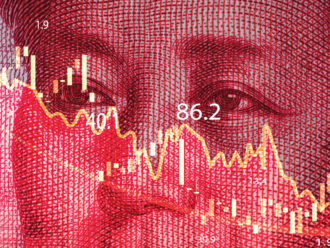“Investors have put in place better terms and fee structures as the pre-crisis ones were undoubtedly unsuitable, with two and- 20 at the top end.”
The bulk of money will be chasing buyouts in large funds of $2bn to $3bn or more in size and they may charge 1.5%, rather than 2%. However, says Mistry, many funds have struggled to attract capital and have found it hard to raise money in the capital markets. This is where there is some downward pressure on fees, with some down by 10% to 20% from the headline rate.
Fees have fallen, particularly at the fund of fund level and can be well below 1%, says Hopgood. These may be as low as 70 or 75 basis points plus a performance fee in the double figures. But investors are also rooting out components that load fees without adding any value. A particular target has been fees charged on dry powder – committed capital that is as yet uninvested.
WE WANT TO BE TOGETHER
One way for investors to reduce the cost of PE is to enter into joint ventures or co-investment with the general partner (GP), says Simon Moss, head of EMEA, Hermes GPE. “We want control over the type of investments that go into our portfolio, particularly as we take socially responsible investment very seriously,” says Moss.
“This is difficult to achieve through the standard blind pool fund model. We have gained greater control through implementing a 50/50 ratio between funds/co-investments.”
Co-investment gives an investor already committed to a fund the opportunity to invest more on a zero fee basis. This may be via a top-up fund, or by investing directly into the assets. But it is important to understand there may be a difference in liquidity between the two holdings. In fact, co-investments are not an easy option, nor are they for the faint-hearted. You need to be well resourced, have in-house capabilities or access to them in order to assess asset specific risks, says Mistry.
It also takes time, adds Moss: “It will take you a few years over 30 or 40 deals and you will need manager diversification as well as country, industry and size diversification.”
ACCESS ALL AREAS
Identifying particular areas of performance is no easy business, either. Private equity assets are very fragmented, says Mistry, and you may have several dozen different categories across geography, sector, etc. Few get involved in distressed assets, as many funds are made up of distressed PE plus debt and other investments. It all depends on your appetite, says Mistry, who had a spread of special situations strategies that at its height made up to 40% of his commitments, though this is moving towards 25%.
There is also very little going on in venture capital (VC), where investors could be missing a trick and can benefit from getting in on primary investments. “Investors have learned from prior cycles,” says Mistry.
“Many didn’t have the right governance back then, but today if they see an opportunity, they can take advantage of it quickly.”
Lidén agrees VC is largely being ignored in favour of large deals with the biggest buyout funds. This surprises him as Facebook and other start-up funds have delivered good returns since the turn of the century.
“It used to be that 30% of funds were startup, but now it is only 10% to 15%,” says Lidén, with the largest funds having a stranglehold on the market, with 1% of funds representing two-thirds of the market. The reason is simple – there is too much money chasing too few deals in the large funds, pushing up prices and driving down returns.




Comments